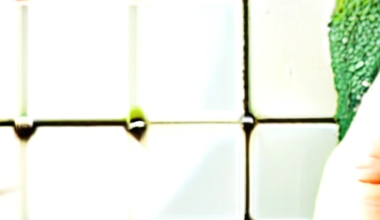Ever tried a chateaubriand reverse sear? If you haven’t, let me tell you, it’s an experience that will level up your culinary skills and dinner parties. Take a moment to imagine a tender, succulent beef with a beautiful brown crust that lights up your taste buds with each mouthful.
Some might be wondering – what’s the magic behind this? Here’s the secret – the reverse sear method. It seems tricky at first glance but don’t worry! Knowledge is power and knowing how to masterfully cook a chateaubriand can make you a hero at your next family gathering or friends’ night in.

This classic French steak is known for its luxurious texture and melt-in-your-mouth flavor, and with the reverse sear technique, you can achieve perfection every time. In this step-by-step guide, we’ll walk you through everything you need to know to create an unforgettable Chateaubriand.
Here is an article you might be interested in cocklebur on clothes
Here is also another exciting article to read commercial squirrel repellent
Preparing the Chateaubriand for Reverse Searing
Before diving into the world of reverse searing, it’s essential to start with a high-quality cut of beef. Traditionally, Chateaubriand is prepared using tenderloin—the most prized part of the cow. Look for a center-cut filet mignon that is uniform in thickness for even cooking.
Once you have chosen your ideal cut of beef, it’s time to enhance its natural flavors through seasoning techniques. Start by generously seasoning both sides of the steak with kosher salt and freshly ground black pepper.
For an extra depth of flavor, consider rubbing minced garlic or dried herbs like thyme or rosemary onto the surface as well.
Setting Up Your Oven and Cookware for Reverse Sear
To ensure even heat distribution throughout the cooking process, preheat your oven to 225°F (107°C). While some prefer using cast iron pans or grills for searing their steaks at high temperatures, we recommend utilizing an oven-safe wire rack set on top of a baking sheet instead.
This setup allows heat circulation from all angles while preventing direct contact between the meat and pan surfaces.
Slow Roasting the Chateaubriand in Low Temperature
Now that your oven is ready and your cookware is set, it’s time to slow-roast the Chateaubriand. Place the seasoned steak on top of the wire rack, ensuring that there is enough space between each piece for proper airflow.
From there, insert a meat thermometer into the thickest part of one steak to monitor its internal temperature.
Cook the beef at 225°F (107°C) until it reaches an internal temperature of around 115-120°F (46-49°C) for medium-rare doneness. The low and slow cooking method allows for gradual cooking, resulting in optimal tenderness throughout.
Searing Technique to Achieve a Perfect Crust
Once your Chateaubriand has reached its desired internal temperature through slow roasting, it’s time to achieve that coveted crust through searing. Preheat a cast iron skillet or grill pan over high heat while you rest your meat for a few minutes.
Next, add a high smoke point oil like avocado or grapeseed oil to the hot pan and carefully place the steaks in. Sear each side for approximately 1 minute or until you achieve an irresistible golden brown crust.
Resting and Serving Suggestions of Chateaubriand
After completing the searing process, transfer your reverse-seared Chateaubriand onto a cutting board and let it rest for about 5 minutes before slicing. This resting period allows juices to redistribute within the steak so every bite remains succulent.
When serving this luxurious dish, consider presenting thick slices of Chateaubriand alongside roasted vegetables or creamy mashed potatoes—all perfect accompaniments that complement its rich flavors.
Garnish with fresh herbs such as parsley or chives for added visual appeal.
Ideal Wine Pairings and Side Dishes with Chateaubriand
To truly elevate your dining experience when enjoying Chateaubriand, selecting the perfect wine pairing is essential. Opt for a full-bodied red wine such as Cabernet Sauvignon or Bordeaux to complement the rich flavors of the beef.

For side dishes, consider roasted asparagus drizzled with balsamic reduction or a fresh spinach and mushroom salad with a light vinaigrette. These choices provide balance to the richness of Chateaubriand while adding a touch of freshness to your plate.
A Final Word
Mastering the art of reverse searing Chateaubriand will undoubtedly impress both your taste buds and guests alike.
By carefully selecting the right cut, utilizing proper seasoning techniques, slow roasting at low temperatures, executing an exceptional sear, and serving alongside ideal wine pairings and side dishes, you’ll create a culinary masterpiece that rivals any high-end restaurant. So gather your ingredients and get ready to take your steak game to new heights – chateaubriand style!
Read another exciting blog post here coon feeders ideas
This is the article to read for today crawlspace furnace
FAQs On chateaubriand reverse sear
Q: What is a Chateaubriand Reverse Sear?
A: The Chateaubriand Reverse Sear is a cooking method that involves slow-cooking a beef tenderloin and then searing it to get a crispy exterior. This technique ensures that the meat is cooked evenly and results in a tender and juicy steak.
Q: How do I cook a beef tenderloin using the reverse sear method?
A: To cook a beef tenderloin using the reverse sear method, start by preheating the oven to a low temperature, around 250 degrees F. Place the whole beef tenderloin on a rack in a roasting pan and cook it in the oven until it reaches your desired internal temperature. Then, remove it from the oven and sear it in a hot skillet for a few minutes on each side to get a nice crust.
Q: What is the recommended internal temperature for a beef tenderloin?
A: For a perfectly cooked beef tenderloin, the recommended internal temperature is 135 degrees F for medium-rare, 145 degrees F for medium, and 160 degrees F for well-done. Use a digital thermometer to accurately measure the temperature.
Q: Can I use a different cut of beef for the reverse sear method?
A: While the Chateaubriand Reverse Sear is traditionally done using beef tenderloin, you can also use other cuts of beef, such as filet mignon steaks or roast beef tenderloin. Just make sure to adjust the cooking time based on the thickness of the meat.
Q: How do I trim a beef tenderloin?
A: To trim a beef tenderloin, start by removing any excess fat and silver skin from the surface of the meat. Use a sharp knife to carefully cut away these unwanted parts. Trimming the beef tenderloin will result in a cleaner and more aesthetically pleasing presentation.
Q: How long should I cook a beef tenderloin using the reverse sear method?
A: The cooking time for a beef tenderloin using the reverse sear method will depend on the size and desired level of doneness. As a general guideline, you can plan on cooking the tenderloin for about 20 minutes per pound. However, it’s always best to use a digital thermometer to determine when the meat is done to your liking.
Q: What should I serve with a reverse sear beef tenderloin?
A: A reverse sear beef tenderloin is a delicious centerpiece for a special occasion meal. It pairs well with traditional sides like roasted potatoes, green beans, and a flavorful horseradish sauce. Don’t forget to serve some wine to complement the flavors of the beef!
Q: Can I overcook a beef tenderloin using the reverse sear method?
A: It is difficult to overcook a beef tenderloin using the reverse sear method since the low and slow cooking process ensures that the meat cooks evenly. However, it’s essential to monitor the internal temperature carefully to avoid overcooking and drying out the meat.
Q: How many servings does a beef tenderloin provide?
A: The number of servings a beef tenderloin provides will depend on the size of the tenderloin and the portion size you prefer. As a general guideline, you can estimate about 6-8 ounces of beef per person when serving a whole beef tenderloin.
Q: How can I make a beef tenderloin recipe more flavorful?
A: To make a beef tenderloin recipe more flavorful, you can marinate the meat in a mixture of herbs, garlic, and olive oil before cooking. Additionally, seasoning the tenderloin generously with sea salt and freshly ground black pepper will enhance the natural flavors of the beef.

